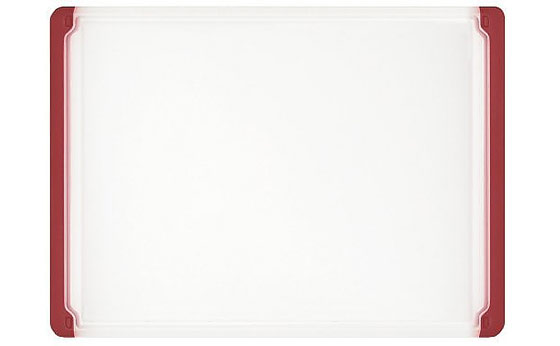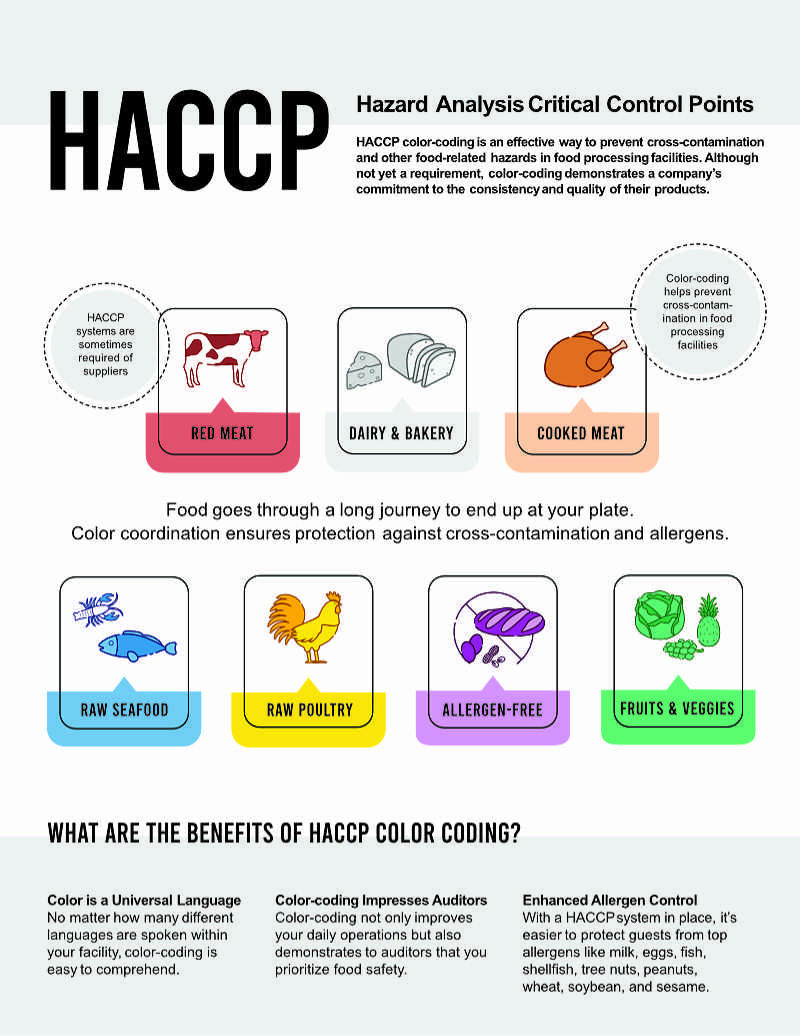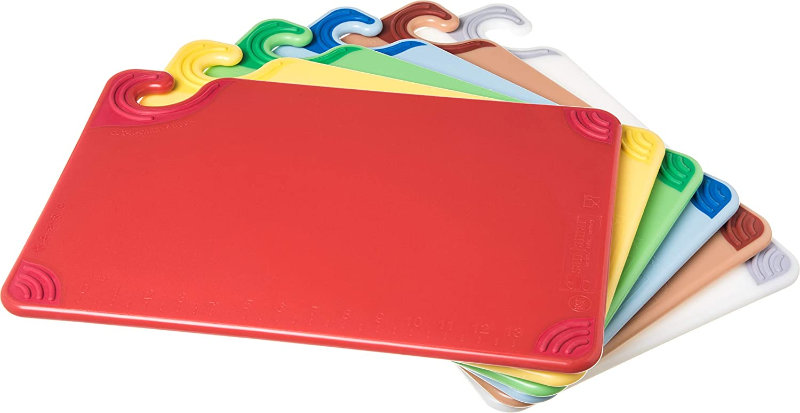Colored Cutting Boards for the Kitchen Help Prevent Contamination

Do you have more than one cutting board? Who doesn’t, right? Well, here’s a potential problem… bacterial contamination. And colored cutting boards for the kitchen can really help with that. Let me explain…
We used to have a few various cutting boards sitting on a counter somewhat near the sink, leaning against the side of a cabinet for easy access. The problem was, they were all white (HDPE food-safe plastic). Why was that less than ideal? Simply put, there’s a potential for cross contamination.
You really shouldn’t use the same cutting board for cutting meat, poultry, vegetables, seafood… There is a possibility for food-borne illness from cross contamination on your cutting boards. Contamination can occur as a result of bad habits. Poor cleaning. Cross contamination. Those knife cuts in the board can hold embedded bacteria too. It can happen easier than you might realize – and you won’t know it until it’s too late.
With that said, technically, if you properly wash or decontaminate a given cutting board prior to switching food types you’ll likely be okay. However, I really like the colored cutting boards even better.
Here is an important (and simple) health safety tip – how to keep your cutting boards safe from cross-contamination…
Colored Cutting Boards for Raw Meat, Raw Poultry, Fruit & Vegetables, Raw Seafood, Dairy & Bakery, and Cooked Meat
The idea is to use a specific colored cutting board for a particular food group.
HACCP color-coding colors to minimize cross-contamination
HACCP color coding is an effective way to prevent cross contamination and other food-related hazards in food processing facilities. So why not your home too?
Colored cutting boards are just one component of an overall Hazard Analysis and Critical Control Point (HACCP) program. “HACCP is a management system in which food safety is addressed through the analysis and control of biological, chemical, and physical hazards from raw material production, procurement and handling, to manufacturing, distribution and consumption of the finished product.” “HACCP color coding is a system that prevents cross contamination and other food-related hazards in the food industry and other food preparation facilities.”
Okay, lets get to it.
What do the colors mean on cutting boards?
I have seen slight variation on this as I have searched for a standard color code for cutting boards. And really, for the purpose of home use, the point is simply to pick a color code and stick to it. However, being the stickler that I am (sometimes), I had to find a standard. I researched San Jamar high quality colored cutting boards (my preferred, and that of many establishments). Here’s their HACCP color code for cutting board color versus food type.
RED (Raw Red Meat)
YELLOW (Raw Poultry)
GREEN (Fruits & Vegetables)
BLUE (Raw Seafood)
TAN (Cooked Meat)
WHITE (Dairy & Bakery)

Here’s a colored cutting board set from San Jamar. They have various dimension sets to choose from. I’ve got the 12×18.
San Jamar Saf-T-Grip Plastic Cutting Board Set
(view on amzn)

Cutting Board Contamination
Even though you washed your cutting board, it doesn’t necessarily ensure that you got everything disinfected (the ‘bad’ stuff is invisible).
The tiny grooves in a cutting board caused by the knife provides a potential breeding ground for bacteria that may have resisted your last washing.
Tip: Disinfect everything that might have come in contact with raw chicken in the kitchen. Hot soapy water wipe down on the counter followed by bleach wipe-down. Wet (wringed out) sponge goes into the microwave for 1 minute afterwards, or the dishwasher. (See article links below)
How To Disinfect A Cutting Board
Except for wood boards, run it through the dishwasher. If your dishwasher has a high temperature ‘sanitary’ mode, that’s even better. Be sure that the cutting board is dishwasher safe. Some will warp! Tip: The San Jamar cutting boards will not warp. Commercial grade.
Or, wipe the cutting board with full-strength white vinegar after each use (after cleaning it). The acetic acid in the vinegar is a good disinfectant, effective against E. coli, Salmonella, and Staphylococcus.
Friction and disinfectant solution. There is no substitute for scrubbing off gross contaminants and using soap and disinfectant solution to remove the pathogens.
How To Deep Clean A Cutting Board
One way is to scrub it with a paste made from the following recipe:
- 1 tablespoon baking soda
- Tablespoon of salt
- 1 tablespoon water
Rinse thoroughly with hot water.
[ Read: Disinfectant Bleach-Water Ratio ]
